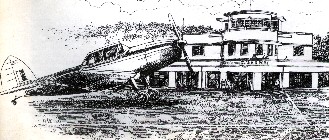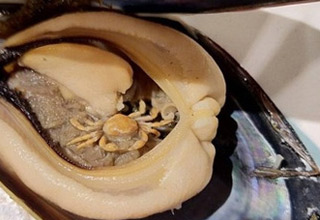One Canadian Pilot Saved the World
Letemdangle
Published
01/11/2011
This is a story about a Canadian pilot that through his singular actions was probably the most significant contribution in winning the war as described by Winston Churchill. Guess which country he fucked over?..... Japan. I wonder if they fly their planes as badly as they drive their cars?
__________________________________________________________________________________
The precursor of the Sri Lankan Air Force were the elements of the Royal Air Force based in Sri Lanka. The history of these elements of the RAF is a run-up to the history of the SLAF.

On 07 December 1941, Japan entered the war with the bombing of the Pearl Harbour. By Christmas day of that year they had occupied Malaya, Guam, Wake Island and Hong Kong. BY 23 March 1942, the Japanese were at Sri Lanka's doorstep in the East with the capture of the Andaman and the Nicobar Islands and they had Philippines, Burma and Singapore under their control.
With the fall of Singapore, Admiral Sir Geoffrey Layton, Commander-in-Chief of the British Far Eastern Fleet, set up headquarters in Sri Lanka with power over the civilian administration as well. The invasion of Sri Lanka by Japan was imminent and Admiral Layton realised that Sri Lanka with hardly an Air Force or an Air Defence system to speak of would be easy prey to the Japanese. He lost no time in taking remedial action. In March that year an air-strip was built at the Colombo racecourse and the Ratmalana airport was taken over by the RAF and extended. Two squadrons of Hurricanes flew in from North Africa and was based in China Bay and the racecourse. A squadron of Blenheim medium bombers detached from Greece, Crete and the Middle East was based in Ratmalana. Also based in Ratmalana were two squadrons of Fleet Air Arm ' Fulmars.' In Koggala Layton deployed an element of Catalina aircraft.
Spotting of Japanese Fleet
By 02 April 1942, Admiral Nagumo's fleet was heading towards Sri Lanka in search of what remained of British'sea power in the East. On 04 April 1942, Sqn. Ldr. L J. Birchall, a Canadian, was in his Catalina on a reconnaissance mission, patrolling an area 250 miles South East of Sri Lanka, when, about two hours before dusk, he spotted a speck on the Southern horizon. This was the vanguard of Nagumo's fleet. Spotting Birchall's aircraft six Japanese zeros, flying twice as fast as the Catalina, were soon in hot pursuit. Under attack by the Japanese fighters, the reconnaissance aircraft disintegrated but not before Birchall had got the message of the presence of the Japanese fleet in Sri Lankan waters.
With darkness setting in, the courageous crew of the Catalina kept afloat in the Indian Ocean, about three hundred and fifty miles from land. Three of the crew were badly injured and before long a Japanese destroyer picked them up. Anxious to obtain intelligence about the country's defences and to find out whether the Catalina had been able to alert the Sri Lankan forces of the presence of the Japanese fleet the helpless crew were subjected to physical violence. Ignorance and denials were all that the Japanese could obtain.
Japanese Attack
On Easter Sunday, 05 April 1942, all hell broke loose in Colombo. A Japanese force of about 125 aircraft, screaming and whining and led by Commander Mitsuo Fuchida of Pearl Harbour fame, attacked strategic targets in Colombo. While Ratmalana came under heavy attack the racecourse went unscathed, with Japanese intelligence unaware of its existence. This lapse on the part of Japanese intelligence cost them dearly. Unable to achieve the air superiority that they had hoped to achieve, the Japanese met stiff resistance and lost twenty seven aircraft in the air battle and the British too lost the same number. On Wednesday 08 April 1942, the Japanese fleet, as expected, attacked Trincomalee.
The airfield in China Bay came under heavy bombardment but again due to the timely , warning by Birchall and the effective measures taken by Layton, the attack was repulsed. In March 1946, many months after victory over Germany and Japan had been won, and Sir Winston Churchill had been voted out of office, the architect of the British victory was asked, according to author Michael Tomlinson, what he considered was the most dangerous moment of the war. Churchill had replied that it was when news was received that the Japanese fleet was heading for Sri Lanka's port of Trincomalee. He went on to say that "Britain was saved from disaster by an airman on reconnaissance flight who though shot down was able to warn Ceylon of the impending attack and eliminate the element of surprise." Sir Winston Churchill Prime Minister of Britain during the World War II According to Canada's Foreign Minister of 1950, Lester Pearson, it was Churchill's opinion that Birchall-later Air Commodore in the Canadian Air Force -had made one of the most singular contributions to victory in World War II.
__________________________________________________________________________________
The precursor of the Sri Lankan Air Force were the elements of the Royal Air Force based in Sri Lanka. The history of these elements of the RAF is a run-up to the history of the SLAF.

On 07 December 1941, Japan entered the war with the bombing of the Pearl Harbour. By Christmas day of that year they had occupied Malaya, Guam, Wake Island and Hong Kong. BY 23 March 1942, the Japanese were at Sri Lanka's doorstep in the East with the capture of the Andaman and the Nicobar Islands and they had Philippines, Burma and Singapore under their control.
With the fall of Singapore, Admiral Sir Geoffrey Layton, Commander-in-Chief of the British Far Eastern Fleet, set up headquarters in Sri Lanka with power over the civilian administration as well. The invasion of Sri Lanka by Japan was imminent and Admiral Layton realised that Sri Lanka with hardly an Air Force or an Air Defence system to speak of would be easy prey to the Japanese. He lost no time in taking remedial action. In March that year an air-strip was built at the Colombo racecourse and the Ratmalana airport was taken over by the RAF and extended. Two squadrons of Hurricanes flew in from North Africa and was based in China Bay and the racecourse. A squadron of Blenheim medium bombers detached from Greece, Crete and the Middle East was based in Ratmalana. Also based in Ratmalana were two squadrons of Fleet Air Arm ' Fulmars.' In Koggala Layton deployed an element of Catalina aircraft.
Spotting of Japanese Fleet
By 02 April 1942, Admiral Nagumo's fleet was heading towards Sri Lanka in search of what remained of British'sea power in the East. On 04 April 1942, Sqn. Ldr. L J. Birchall, a Canadian, was in his Catalina on a reconnaissance mission, patrolling an area 250 miles South East of Sri Lanka, when, about two hours before dusk, he spotted a speck on the Southern horizon. This was the vanguard of Nagumo's fleet. Spotting Birchall's aircraft six Japanese zeros, flying twice as fast as the Catalina, were soon in hot pursuit. Under attack by the Japanese fighters, the reconnaissance aircraft disintegrated but not before Birchall had got the message of the presence of the Japanese fleet in Sri Lankan waters.
With darkness setting in, the courageous crew of the Catalina kept afloat in the Indian Ocean, about three hundred and fifty miles from land. Three of the crew were badly injured and before long a Japanese destroyer picked them up. Anxious to obtain intelligence about the country's defences and to find out whether the Catalina had been able to alert the Sri Lankan forces of the presence of the Japanese fleet the helpless crew were subjected to physical violence. Ignorance and denials were all that the Japanese could obtain.
Japanese Attack
On Easter Sunday, 05 April 1942, all hell broke loose in Colombo. A Japanese force of about 125 aircraft, screaming and whining and led by Commander Mitsuo Fuchida of Pearl Harbour fame, attacked strategic targets in Colombo. While Ratmalana came under heavy attack the racecourse went unscathed, with Japanese intelligence unaware of its existence. This lapse on the part of Japanese intelligence cost them dearly. Unable to achieve the air superiority that they had hoped to achieve, the Japanese met stiff resistance and lost twenty seven aircraft in the air battle and the British too lost the same number. On Wednesday 08 April 1942, the Japanese fleet, as expected, attacked Trincomalee.
The airfield in China Bay came under heavy bombardment but again due to the timely , warning by Birchall and the effective measures taken by Layton, the attack was repulsed. In March 1946, many months after victory over Germany and Japan had been won, and Sir Winston Churchill had been voted out of office, the architect of the British victory was asked, according to author Michael Tomlinson, what he considered was the most dangerous moment of the war. Churchill had replied that it was when news was received that the Japanese fleet was heading for Sri Lanka's port of Trincomalee. He went on to say that "Britain was saved from disaster by an airman on reconnaissance flight who though shot down was able to warn Ceylon of the impending attack and eliminate the element of surprise." Sir Winston Churchill Prime Minister of Britain during the World War II According to Canada's Foreign Minister of 1950, Lester Pearson, it was Churchill's opinion that Birchall-later Air Commodore in the Canadian Air Force -had made one of the most singular contributions to victory in World War II.






1 Comments